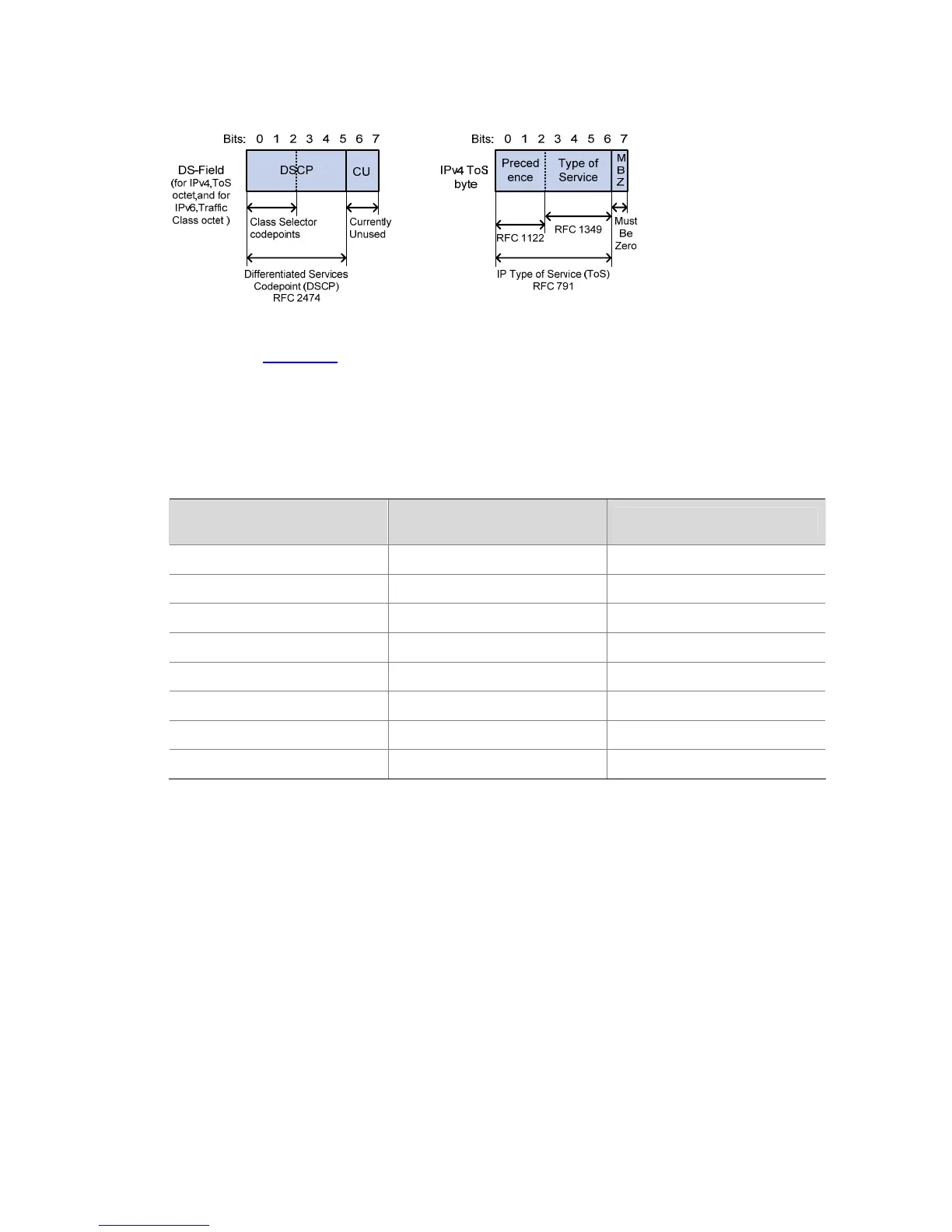1-5
Figure 1-2 DS field and ToS byte
As shown in
Figure 1-2, the ToS field of the IP header contains eight bits: the first three bits
(0 to 2) represent IP precedence from 0 to 7 and the subsequent four bits (3 to 6) represent
a ToS value from 0 to 15. According to RFC 2474, the ToS field of the IP header is redefined
as the DS field, where a DiffServ code point (DSCP) precedence is represented by the first
six bits (0 to 5) and is in the range 0 to 63. The remaining two bits (6 and 7) are reserved.
Table 1-2 Description on IP precedence
IP precedence value
(decimal)
IP precedence value
(binary)
Description
0 000 Routine
1 001 priority
2 010 immediate
3 011 flash
4 100 flash-override
5 101 critical
6 110 internet
7 111 network
In a Diff-Serv network, traffic is grouped into the following four classes, and packets are
processed according to their DSCP values.
z Expedited Forwarding (EF) class: In this class, packets are forwarded regardless of
link share of other traffic. The class is suitable for preferential services with low delay,
low packet loss ratio, low jitter, and assured bandwidth (such as the virtual leased line
service).
z Assured Forwarding (AF) class: This class is divided into four subclasses (AF1 to AF4),
each containing three drop priorities for more granular classification. The QoS level of
the AF class is lower than that of the EF class.
z Class Selector (CS) class: This class is derived from the IP ToS field and includes eight
subclasses.

